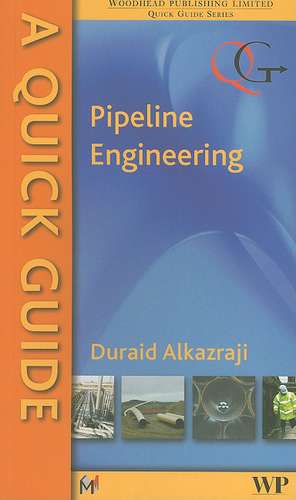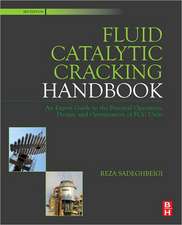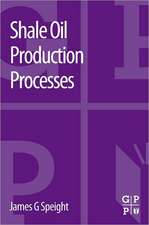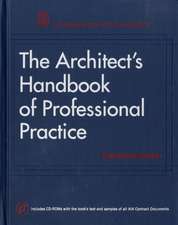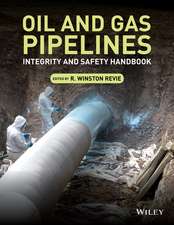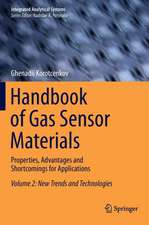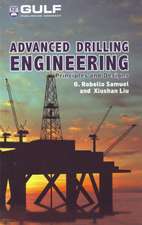A Quick Guide to Pipeline Engineering
Autor D Alkazrajien Limba Engleză Paperback – 25 mar 2008
A Quick Guide to Pipeline Engineering provides concise, easy-to-use, and accessible information on onshore and offshore pipeline engineering. Topics covered include: design; construction; testing; operation and maintenance; and decommissioning.
Basic principles are discussed and clear guidance on regulations is provided, in a way that will prove useful to both engineers and students.
- Provides concise, easy-to-use, and accessible information on onshore and offshore pipeline engineering
- Topics covered include design, construction, testing, operation, maintenance and decommissioning
- Basic principles are discussed and clear guidance on regulations is provided
Preț: 291.42 lei
Nou
Puncte Express: 437
Preț estimativ în valută:
55.77€ • 58.01$ • 46.04£
55.77€ • 58.01$ • 46.04£
Carte tipărită la comandă
Livrare economică 07-21 aprilie
Preluare comenzi: 021 569.72.76
Specificații
ISBN-13: 9781845694906
ISBN-10: 1845694902
Pagini: 176
Dimensiuni: 127 x 187 x 10 mm
Greutate: 0.19 kg
Editura: ELSEVIER SCIENCE
ISBN-10: 1845694902
Pagini: 176
Dimensiuni: 127 x 187 x 10 mm
Greutate: 0.19 kg
Editura: ELSEVIER SCIENCE
Cuprins
- The Quick Guide Series
- Invitation to New Authors
- Preface
- Summary
- Chapter1: Principles of Pipeline Design
- 1.1 Effect on the environment
- 1.2 Routing
- 1.3 Approval and legal considerations
- Chapter 2: Design Approach
- 2.1 Factors that influence the length of a pipeline
- 2.2 Choosing a wall thickness for the pipeline
- 2.3 Choosing an appropriate material grade for the pipeline
- 2.4 Toughness
- 2.2 Operational pressure
- 2.6 Temperature effects
- 2.7 Surge
- 2.8 Pipeline coating
- 2.9 Pipeline protection
- Chapter 3: Pipeline Construction and Risk Assessment Techniques
- 3.1 Pipeline manufacturing methods
- 3.2 Land preparation, excavation and pipe stringing
- 3.3 Corrosion protection
- 3.4 Pipeline codes and standards
- 3.5 Risk assessment techniques
- 3.6 Quantitative risk assessment
- 3.7 Qualitative risk assessment
- Chapter 4: Pressure Testing and Commissioning
- 4.1 Pressure testing
- 4.2 Commissioning
- Chapter 5: Pipeline Operation
- 5.1 Magnetic inspection
- 5.2 Ultrasonic inspection
- 5.3 Geometric tools
- 5.4 In-service defects and corrosion mechanisms
- Chapter 6: Pipeline Maintenance
- 6.1 Assessment of internal and external corrosion features
- 6.2 Assessing dents/profile distortions
- 6.3 Significance of manufacturing and construction defects
- Chapter 7: Pipeline Condition Monitoring and Repair Methods
- 7.1 Pearson survey
- 7.2 CIPPS survey
- 7.3 DCVG survey
- 7.4 Repair techniques
- Chapter 8: Pipeline Decommissioning and Industry Developments
- 8.1 Pipeline decommissioning
- 8.2 Pipeline industry developments
- References
- Index
